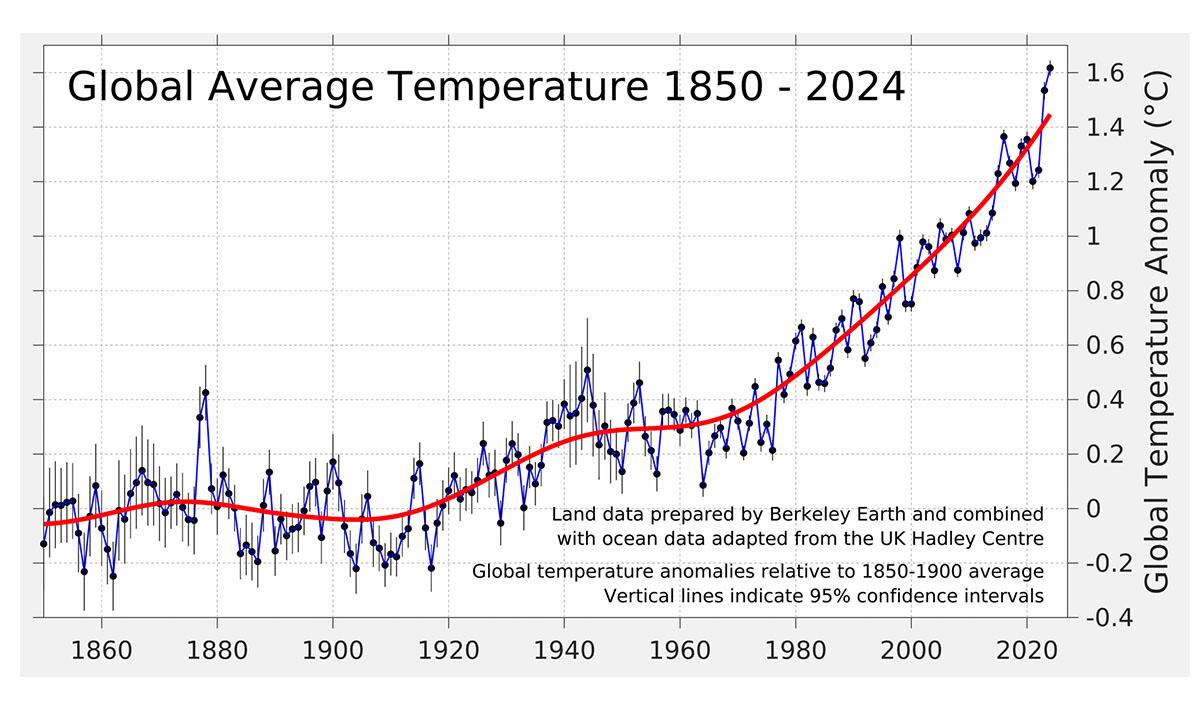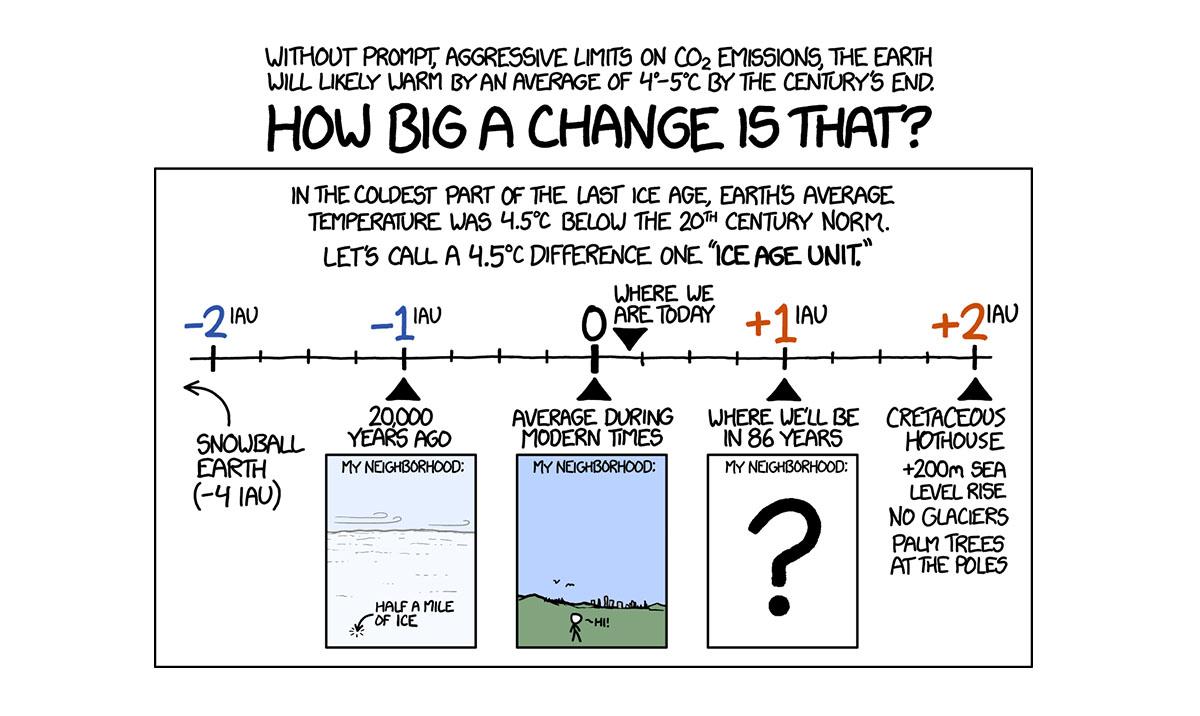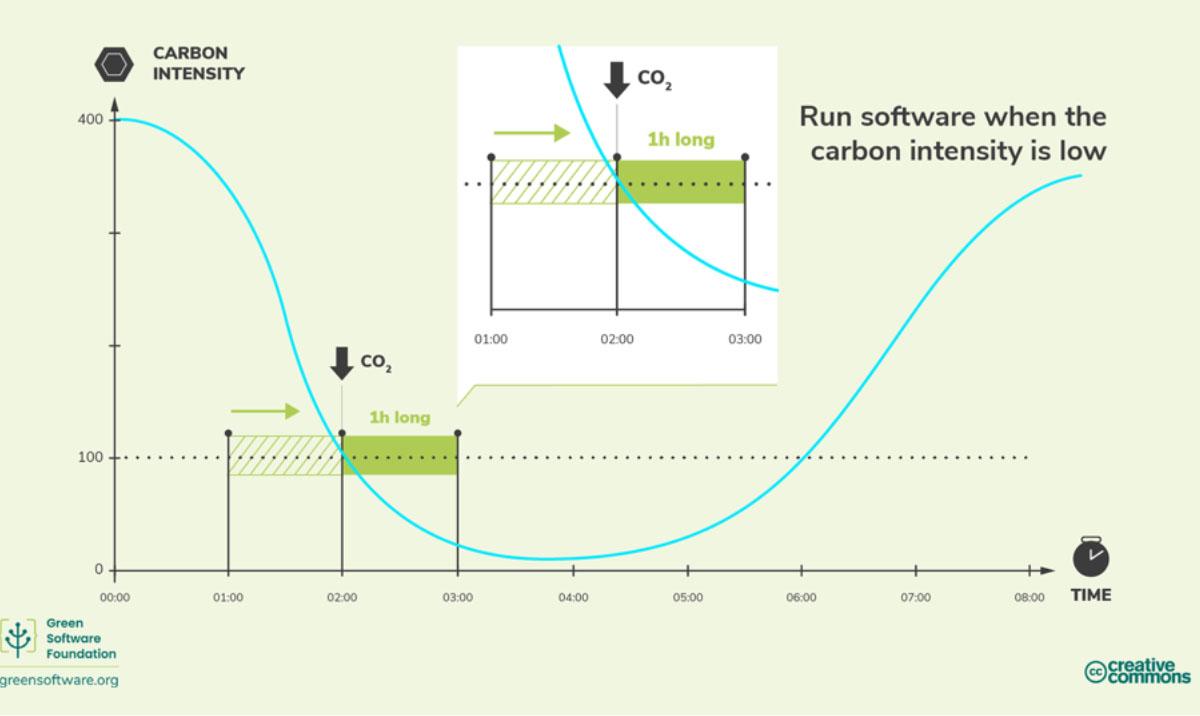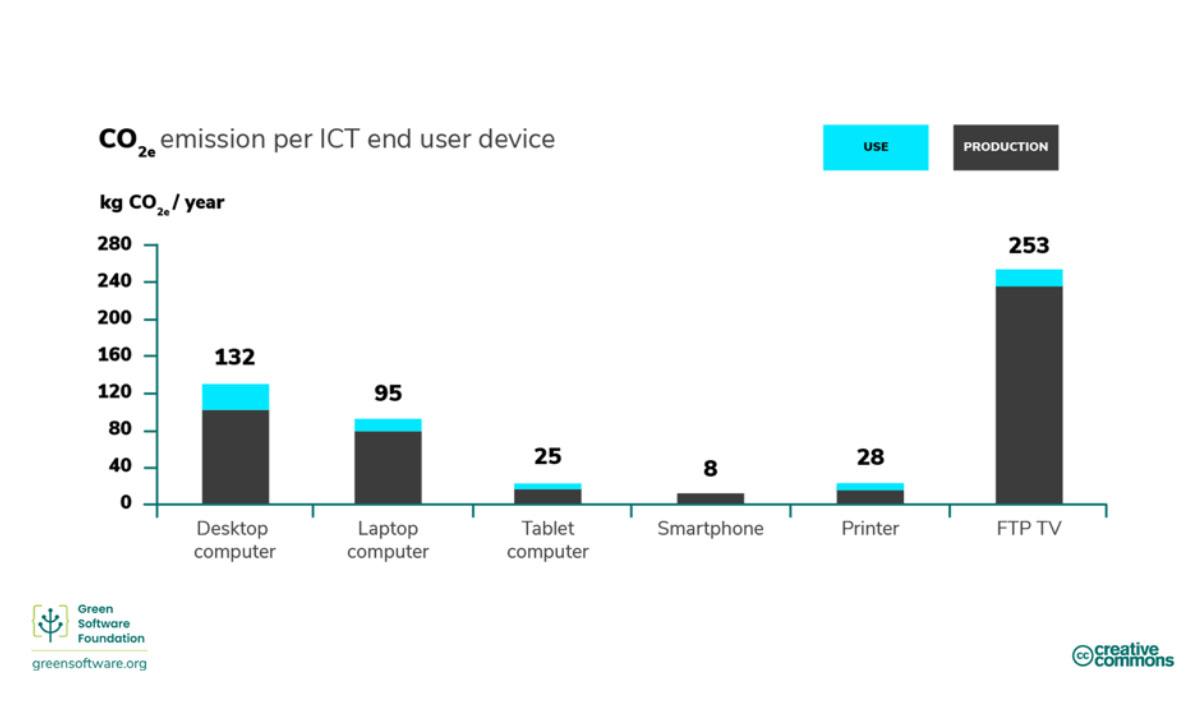Improving carbon awareness around HPC services
14 August 2025
Various initiatives and projects exist to help researchers better understand the emissions arising from their research and identify actions to reduce their impact. However, many researchers struggle to grasp how the emissions from their work (e.g. software use or digital research infrastructure) compare to other sources.


Image credits: (top) Global Temperature Report 2025, Berkeley Earth; (above) https://xkcd.com/1379/.
Many people are keen to make changes to reduce emissions and work towards Net Zero goals but a lack of carbon awareness is holding back progress. This carbon awareness can take many forms but two are of key importance:
- A quantitative understanding of the sources of emissions, the context in which they arise, how to measure and monitor emissions and how to reduce and even eliminate emission from our activities
- Understanding how the scale of emissions from different activities compare to each other. While financial costs and benefits are intuitive (e.g. £1M = rough cost of two semi-detached houses), carbon costs and benefits such as 1,000 kg$\mathrm{CO_2}$e (kilograms of carbon dioxide equivalent) lack a similarly intuitive reference frame.
Carbon awareness is important in itself in the face of the climate emergency, but it is also key to making use of digital research infrastructure (DRI), including high-performance computing (HPC), more environmentally sustainable: the proportionate carbon footprint and the efficacy of “green” behaviours must be understood before a project begins. Without a relatable context, it is difficult for researchers to assess both the scale of emissions and the impact of emission reductions from their work and actions.
At EPCC, we have been working on various initiatives to improve the understanding of emissions and the carbon awareness of people involved with DRI, and particularly HPC infrastructure. This work includes:
- Discussing the wider context of emissions reduction and how it does (or does not) relate to improving energy efficiency. (See previous blog post The risk of unintended consequences.)
- Estimating the carbon emissions associated with the ARCHER2 service. (See previous blog post: Estimating emissions from ARCHER2.)
- Providing carbon emissions estimates to ARCHER2 stakeholders via command line tools. (See the ARCHER2 user guide for details: Estimating your emissions.)
Open-source training
In this post I discuss recent work we have undertaken to develop introductory, open-source training to improve carbon awareness among all stakeholders involved in HPC: from funders responsible for procuring HPC systems, through the research technology professionals (RTPs) and research software engineers (RSEs) supporting the services, to the researchers using the HPC services.
The resulting lesson is available now as part of the Carpentries Incubator and HPC Carpentry. See Green software use on HPC.
The idea for this lesson arose out of various discussions with the Software Sustainability Institute, Society of Research Software Engineering and others. Given the broad range of people we wanted to be able to reach with this lesson, it is designed to not have any technical prerequisites or technical programming content. The resulting lesson is accessible to anyone working in or on DRI with an interest in improving their carbon awareness and learning what actions they can take to reduce emissions from HPC systems and DRI more generally.
The lesson draws heavily on the open source Green Software Practitioner lesson from the Green Software Foundation. The material has been expanded and modified to be more specifically focused on HPC systems, and concrete examples and exercises added based on the UK National Supercomputing Service, ARCHER2, have been added.
The lesson covers a range of areas. The main headings and the topics covered are:
Energy efficiency
- Scale of emissions from electricity generation (“operational” emissions)
- Power Usage Effectiveness (PUE), energy proportionality
- Relationship between performance and power draw In HPC software.
Carbon awareness
- Introduction to energy markets and differences between renewable and fossil fuel energy generation in those markets (dispatchability and curtailment)
- General strategies for reducing emissions from energy use: demand shifting (changing where or when compute resources are used to reduce emissions) and demand shaping (changing the profile of energy use to reduce emissions).
Hardware efficiency
- Embodied emissions from manufacture, shipping and disposal of hardware
- Improving embodied emissions efficiency by extending the lifespan of hardware
- Impact of increasing utilisation and performance on embodied emissions efficiency.
Measurement
- Introduction to the Greenhouse Gas (GHG) Protocol for measuring and comparing emissions
- Approaches for measuring emissions (embodied and operational) from HPC systems
- Defining metrics to measure, predict and quantify emissions reductions (the HPC-CI metric, more below!).
Reducing emissions
- Differences between carbon neutral and net zero
- Carbon abatement and carbon offsets
- Approaches to reducing emissions from HPC system use.


Above: Embodied and operational emissions for various hardware.
HPC-CI metric
As part of the Measurement episode of the lesson we introduce the HPC Carbon Intensity (HPC-CI) metric to allow people to measure, monitor and predict emissions for HPC system use. (This is based on the Software Carbon Intensity, SCI, metric developed by the Green Software Foundation.) The HPC-CI definition is
The terms of the equation are defined as:
- E – the energy used (in kWh)
- CI – the carbon intensity associated with electricity generation (in kg$\mathrm{CO_2}$e/kWh). This can be obtained from sites such as https://carbonintensity.org.uk/
- M – the embodied emissions in kg$\mathrm{CO_2}$e
- R – the functional unit representing output from HPC system use.
The HPC-CI is a rate rather than a total and measures the intensity of emissions according to the chosen functional unit. The specification does not prescribe the functional unit and you are free to pick whichever best describes the output from HPC system use. For example, this could be a metric from the software you use (ns simulated, number of years simulated, iterations) or a metric tied to research progress (number of compounds modelled, data points analysed, papers published). There may also be ideas in literature related to your work area of what a good choice may be. You may want to trial different functional units to see which one works best for your work.
As a concrete example, if you are simulating the dynamics of a biomolecular system (using software such as GROMACS, Amber or NAMD), you could choose the number of ns simulated as your functional unit.
You can use multiple functional units simultaneously to have multiple HPC-CI values for emissions rates from HPC systems. Different HPC-CI units may be more or less useful in different contexts.
The HPC-CI has several different potential uses:
- It can be used to estimate emissions from current HPC system use
- It can be used to estimate emissions from potential future HPC system use
- It can be used to measure improvements in emissions efficiency and reductions in emissions from HPC system use.
In the final use case, monitoring improvements in emissions efficiency, it is important to note that the only way to improve HPC-CI metric is through carbon elimination (sometimes known as abatement) activities or improved efficiency - not through offsets. Ways that the HPC-CI can be improved include:
- Improve energy efficiency – reduce E
- Implement demand shifting or shaping – reduce CI
- Improve efficiency of hardware use – reduce M
- Improve performance – increase R
The Reducing Emissions episode of the lesson describes a number of different strategies that can be undertaken by different stakeholder types to improve the HPC-CI. For example, software developers can implement improvements that could reduce energy use, improve efficiency of hardware use or improve performance; people procuring HPC systems can ensure they are sited in locations that have low CI values; service operators can work to improve energy efficiency (e.g. by reducing PUE).
We have taught the new course twice so far and had excellent feedback on its content and good suggestions for improvement, which we are working to implement.
The current material primarily addresses the first of the carbon awareness aspects introduced at the start of this post (understanding the context of emissions, measurement and options for reduction). There has been interest in adding an additional half-day section introducing methodologies for estimating personal professional carbon footprints to address the second carbon awareness aspect (appreciating the relative scale of emissions from different sources). We hope to develop this over the next few months, based on work done at the SSI Collaborations Workshop in May 2025 in Stirling.

